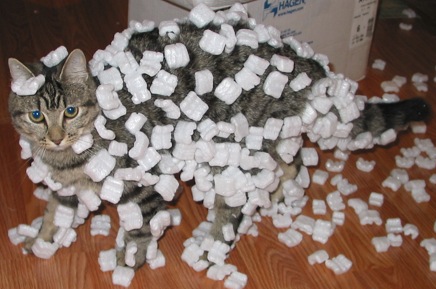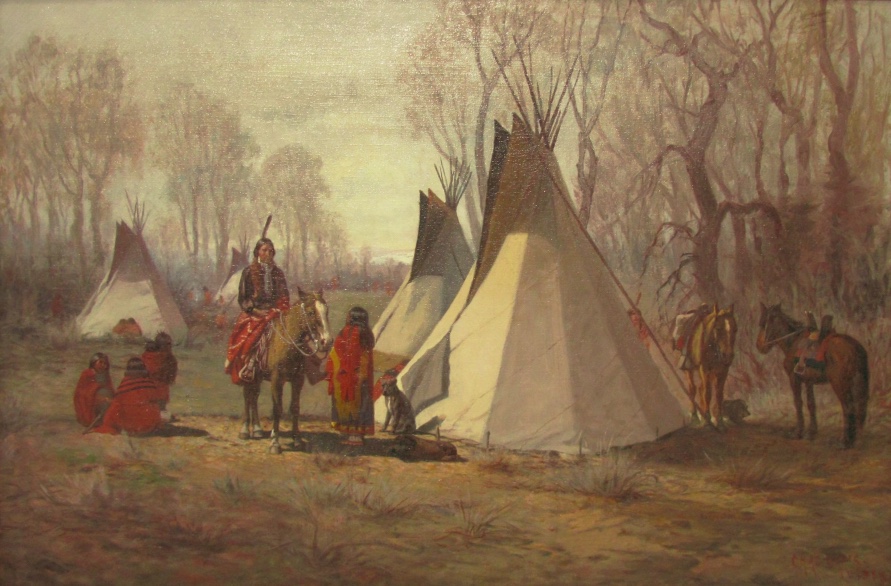|
Triboluminescence
Triboluminescence is a phenomenon in which light is generated when a material is mechanically pulled apart, ripped, scratched, crushed, or rubbed (see tribology). The phenomenon is not fully understood but appears in most cases to be caused by the separation and reunification of static electric charges, see also triboelectric effect. The term comes from the Greek τρίβειν ("to rub"; see tribology) and the Latin ''lumen'' (light). Triboluminescence can be observed when breaking sugar crystals and peeling adhesive tapes. ''Triboluminescence'' is often a synonym for ''fractoluminescence'' (a term mainly used when referring only to light emitted from fractured crystals). Triboluminescence differs from piezoluminescence in that a piezoluminescent material emits light when deformed, as opposed to broken. These are examples of mechanoluminescence, which is luminescence resulting from any mechanical action on a solid. History Quartz rattlers of the Uncompahgre Ute indigenous ... [...More Info...] [...Related Items...] OR: [Wikipedia] [Google] [Baidu] |
Triboelectric Effect
The triboelectric effect (also known as triboelectricity, triboelectric charging, triboelectrification, or tribocharging) describes electric charge transfer between two objects when they contact or slide against each other. It can occur with different materials, such as the sole of a shoe on a carpet, or between two pieces of the same material. It is ubiquitous, and occurs with differing amounts of charge transfer (tribocharge) for all solid materials. There is evidence that tribocharging can occur between combinations of solids, liquids and gases, for instance liquid flowing in a solid tube or an aircraft flying through air. Often static electricity is a consequence of the triboelectric effect when the charge stays on one or both of the objects and is not conducted away. The term triboelectricity has been used to refer to the field of study or the general phenomenon of the triboelectric effect, or to the static electricity that results from it. When there is no sliding, triboc ... [...More Info...] [...Related Items...] OR: [Wikipedia] [Google] [Baidu] |
Methyl Salicylate
Methyl salicylate (oil of wintergreen or wintergreen oil) is an organic compound with the formula C8H8O3. It is the methyl ester of salicylic acid. It is a colorless, viscous liquid with a sweet, fruity odor reminiscent of root beer (in which it is used as a flavoring), but often association (psychology), associatively called "minty", as it is an ingredient in mint candies. It is produced by many species of plants, particularly wintergreens. It is also produced synthetically, used as a fragrance and as a flavoring agent. Biosynthesis and occurrence Methyl salicylate was first isolated (from the plant ''Gaultheria procumbens'') in 1843 by the French chemist Auguste André Thomas Cahours (1813–1891), who identified it as an ester of salicylic acid and methanol. The biosynthesis of methyl salicylate arises via the hydroxylation of benzoic acid by a cytochrome P450 followed by reaction with a methyltransferase enzyme. Methyl salicylate as a plant metabolite Many plants produce ... [...More Info...] [...Related Items...] OR: [Wikipedia] [Google] [Baidu] |
Uncompahgre Ute
The Uncompahgre Ute () or ꞌAkaꞌ-páa-gharʉrʉ Núuchi (also: Ahkawa Pahgaha Nooch) is a band of the Ute people, Ute, a Native American tribe located in the US states of Colorado and Utah. In the Ute language, means "rocks that make water red." The band was formerly called the Tabeguache. Tabeguache The Tabeguache (Ute dialect, Ute language: , ,, and ), or “People of Sun Mountain,” was the largest of the ten nomadic bands of the Ute and part of the Northern Ute People. They lived in river valleys of the Gunnison River and Uncompahgre River between the Parianuche to the north and the Weeminuche to the south. They traveled seasonally. Like other Ute, they were hunters who followed and hunted buffalo, deer, and elk. They moved their camp about every month, and created a link to Mother Earth at each camp by constructing a medicine wheel at the center of camp. The Tabeguache believed that the Pikes Peak, Pikes Peak region is their home. Their name for the mountain is , mea ... [...More Info...] [...Related Items...] OR: [Wikipedia] [Google] [Baidu] |
Jean Picard
Jean Picard (21 July 1620 – 12 July 1682) was a French astronomer and priest born in La Flèche, where he studied at the Jesuit Collège Royal Henry-Le-Grand. He is principally notable for his accurate measure of the size of the Earth, based on a careful survey of one degree of latitude along the Paris Meridian. Geodesy Picard was the first person to measure the size of the Earth to a reasonable degree of accuracy in an arc measurement survey conducted in 1669–1670, for which he is honored with a pyramid at Juvisy-sur-Orge. Guided by Maurolycus's methodology and Willebrord Snellius's mathematics for doing so, Picard achieved this by measuring one degree of latitude along the Paris Meridian using triangulation along thirteen triangles stretching from Paris to the clocktower of Sourdon, near Amiens. His measurements produced a result of for one degree of latitude, which gives a corresponding terrestrial radius of . Isaac Newton was to use this value in his th ... [...More Info...] [...Related Items...] OR: [Wikipedia] [Google] [Baidu] |
Wintergreen
Wintergreen is a group of aromatic plants. The term ''wintergreen'' once commonly referred to plants that remain green (continue photosynthesis) throughout the winter. The term ''evergreen'' is now more commonly used for this characteristic. Most species of the shrub genus ''Gaultheria'' demonstrate this characteristic and are called wintergreens in North America, the most common generally being the American wintergreen ('' Gaultheria procumbens''). Wintergreens in the genus ''Gaultheria'' contain an aromatic compound, methyl salicylate, and are used as a mintlike flavoring. Uses The berries of most species can be eaten raw or used in pies. Wintergreen is a common flavoring in American products ranging from chewing gum, mints, and candies to smokeless tobacco such as dipping tobacco (American "dip" snuff) and snus. It is a common flavoring for dental hygiene products such as mouthwash and toothpaste. It is often a component of root beer, which originated in the United St ... [...More Info...] [...Related Items...] OR: [Wikipedia] [Google] [Baidu] |
Life Savers
Life Savers (stylized as LifeSavers) is an American brand of ring-shaped hard and soft candy. Its range of mints and fruit-flavored candies is known for its distinctive packaging, coming in paper-wrapped aluminum foil rolls. Candy manufacturer Clarence Crane of Garrettsville, Ohio (father of the poet Hart Crane) invented the brand in 1912 as a "summer candy" that could withstand heat better than chocolate. The candy is so named due to its shape resembling that of a traditional ring-style life preserver also known as a "life saver." After registering the trademark, Crane sold the rights to his Pep-O-Mint peppermint candy to then-entrepreneur Edward John Noble for $2,900. Instead of using cardboard rolls, which were not very successful, Noble created tinfoil wrappers to keep the mints fresh. Noble founded the Life Savers and Candy Company in 1913 and significantly expanded the market for the product by installing Life Savers displays next to the cash registers of restaurants a ... [...More Info...] [...Related Items...] OR: [Wikipedia] [Google] [Baidu] |
Electric Spark
An electric spark is an abrupt electrical discharge that occurs when a sufficiently high electric field creates an Ionization, ionized, Electric current, electrically conductive channel through a normally-insulating medium, often air or other gases or gas mixtures. Michael Faraday described this phenomenon as "the beautiful flash of light attending the discharge of common electricity". The rapid transition from a non-conducting to a conductive state produces a brief emission of light and a sharp crack or snapping sound. A spark is created when the applied electric field exceeds the dielectric strength, dielectric breakdown strength of the intervening medium. For air, the breakdown strength is about 30 kV/cm at sea level. Experimentally, this figure tends to differ depending upon humidity, atmospheric pressure, shape of electrodes (needle and ground-plane, hemispherical etc.) and the corresponding spacing between them and even the type of waveform, whether sinusoidal or cosine-rec ... [...More Info...] [...Related Items...] OR: [Wikipedia] [Google] [Baidu] |
Pressure-sensitive Tape
Pressure-sensitive tape or pressure-sensitive adhesive tape (PSA tape) is an adhesive tape that sticks when pressure is applied without the need for a solvent (such as water) or heat for activation. It is also known in various countries as self-stick tape, sticky tape, or just adhesive tape and tape, as well as genericized trademarks, such as '' Sellotape'', '' Durex (tape)'', '' Scotch tape'', etc. PSA tape consists of three components: *the tape itself, which often is cellophane, cellulose acetate, or polyvinyl chloride. Other materials include paper, plastic film, cloth, or metal foil coated onto a backing material such as paper, plastic film, cloth, or metal foil. *a pressure-sensitive adhesive. *release liner, which keeps the tape from sticking to itself. Some have layers of adhesives, primers, release agents, filaments, printing, etc. made for specific functions. It sticks without the need for a solvent such as water or heat for activation. By contrast, "gummed" ... [...More Info...] [...Related Items...] OR: [Wikipedia] [Google] [Baidu] |
Tribo
Tribo () is a Ukrainian company, manufacturer of the brake pads, braking systems and friction materials. General information * Production facilities are located in Ukraine, the Czech Republic, Kazakhstan and Belarus * The company manufactures about 300 products (foremost brake pads and friction materials) for railway vehicles, agricultural machinery, automotive industry * International sales cover more than 20 countries worldwide (2018) * Organization's quality management system is certified to the standards: ISO/IEC 17025, ISO/TS 16949, ISO 9001 History On July 1, 1979, the first production line of the plant was launched in Bila Tserkva. In 1996 the company was reorganized into PJSC Tribo, later into Tribo Ltd. In 2005, Tribo Company founded the representative office in Kazakhstan and in 2009 a production of the brake pads for the freight and passenger cars was established here too. Tribo is the only manufacturer of these products in Kazakhstan. In 2008, a subsidiary ... [...More Info...] [...Related Items...] OR: [Wikipedia] [Google] [Baidu] |
Free Radicals
In chemistry, a radical, also known as a free radical, is an atom, molecule, or ion that has at least one unpaired electron, unpaired valence electron. With some exceptions, these unpaired electrons make radicals highly chemical reaction, chemically reactive. Many radicals spontaneously dimer (chemistry), dimerize. Most organic radicals have short lifetimes. A notable example of a radical is the hydroxyl radical (HO·), a molecule that has one unpaired electron on the oxygen atom. Two other examples are triplet oxygen and methylene radical, triplet carbene (꞉) which have two unpaired electrons. Radicals may be generated in a number of ways, but typical methods involve redox reactions. Ionizing radiation, heat, electrical discharges, and electrolysis are known to produce radicals. Radicals are intermediates in many chemical reactions, more so than is apparent from the balanced equations. Radicals are important in combustion, atmospheric chemistry, polymerization, Plasma (phy ... [...More Info...] [...Related Items...] OR: [Wikipedia] [Google] [Baidu] |






